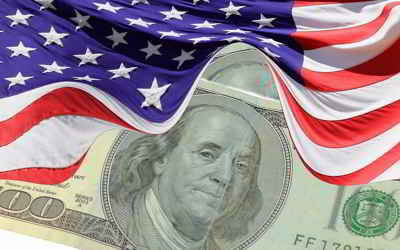US State Economies: Agriculture & Industry
Agriculture and Industry Services and Products of each of the Fifty States
US economy is a set of human and social activities and institutions related to the production, distribution, exchange and consumption of agriculture and industry goods and services. The balance between US various economic sectors differs largely between various regions and other states in the US.
The United States has the largest and one of the most technologically advanced national economies in the world, with a GDP of 12.373 trillion dollars. In this capitalistic, free market-oriented mixed economy, corporations and other private firms make the vast majority of microeconomic decisions, and governments prefer to take a minimal role in the domestic economy. Because of this, the US has a small social safety net, and business firms in the US face considerably less regulation than firms in many other nations. The fiscal policy of the nation since the New Deal has followed the general ideals of Keynesian economics, which replaced Classical economics following the Great Depression. Neoliberal ideals have become more prominent since the presidency of Ronald Reagan and with the growing influence of globalization. Since the early 1980s, the United States has transformed from being the world's largest creditor to having a substantial current account deficit and a national debt of unprecedented size relative to national GDP since World War II. Jump to Onrush of Technology - "Two-tier Labor Market"
Onrush of Technology - "Two-tier Labor Market"
The onrush of technology largely explains the gradual development of a "two-tier labor market" in which those at the bottom lack the education and the professional/technical skills of those at the top and, more and more, fail to get comparable pay raises, health insurance coverage, and other benefits. Since 1975, practically all the gains in household income have gone to the top 20% of households.
Since 1996, dividends and capital gains have grown faster than wages or any other category of after-tax income. Imported oil accounts for nearly 55% of US consumption.
Crude oil prices doubled between 2001 and 2006, the year home prices peaked; higher gasoline prices ate into consumers' budgets and many individuals fell behind in their mortgage payments.
Oil prices climbed another 50% between 2006 and 2008, and bank foreclosures more than doubled in the same period. Besides dampening the housing market, soaring oil prices caused a drop in the value of the dollar and a deterioration in the US merchandise trade deficit, which peaked at $840 billion in 2008.
The sub-prime mortgage crisis, falling home prices, investment bank failures, tight credit, and the global economic downturn pushed the United States into a recession by mid-2008. GDP contracted until the third quarter of 2009, making this the deepest and longest downturn since the Great Depression.
To help stabilize financial markets, in October 2008 the US Congress established a $700 billion Troubled Asset Relief Program (TARP). The government used some of these funds to purchase equity in US banks and industrial corporations, much of which had been returned to the government by early 2011.
In January 2009 the US Congress passed and President Barack OBAMA signed a bill providing an additional $787 billion fiscal stimulus to be used over 10 years - two-thirds on additional spending and one-third on tax cuts - to create jobs and to help the economy recover.
In 2010 and 2011, the federal budget deficit reached nearly 9% of GDP. In 2012 the federal government reduced the growth of spending and the deficit shrank to 7.6% of GDP. Wars in Iraq and Afghanistan required major shifts in national resources from civilian to military purposes and contributed to the growth of the budget deficit and public debt.
Through 2011, the direct costs of the wars totaled nearly $900 billion, according to US government figures. US revenues from taxes and other sources are lower, as a percentage of GDP, than those of most other countries.
In March 2010, President OBAMA signed into law the Patient Protection and Affordable Care Act, a health insurance reform that was designed to extend coverage to an additional 32 million American citizens by 2016, through private health insurance for the general population and Medicaid for the impoverished. Total spending on health care - public plus private - rose from 9.0% of GDP in 1980 to 17.9% in 2010.
In July 2010, the president signed the DODD-FRANK Wall Street Reform and Consumer Protection Act, a law designed to promote financial stability by protecting consumers from financial abuses, ending taxpayer bailouts of financial firms, dealing with troubled banks that are "too big to fail," and improving accountability and transparency in the financial system - in particular, by requiring certain financial derivatives to be traded in markets that are subject to government regulation and oversight.
In December 2012, the Federal Reserve Board announced plans to purchase $85 billion per month of mortgage-backed and Treasury securities in an effort to hold down long-term interest rates, and to keep short term rates near zero until unemployment drops to 6.5% from the December rate of 7.8%, or until inflation rises above 2.5%.
In late 2013, the Fed announced that it would begin scaling back long-term bond purchases to $75 billion per month in January 2014 and reduce them further as conditions warranted; the Fed, however, would keep short-term rates near zero so long as unemployment and inflation had not crossed the previously stated thresholds. Long-term problems include stagnation of wages for lower-income families, inadequate investment in deteriorating infrastructure, rapidly rising medical and pension costs of an aging population, energy shortages, and sizable current account and budget deficits - including significant budget shortages for state governments.

US economy is relies on private decision-making ("economic freedom")




